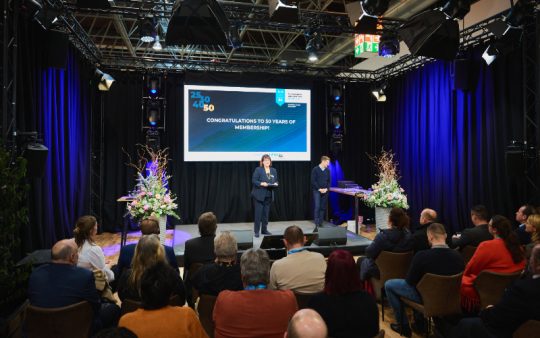From a prickly cactus to a leather jacket

Published on 18.12.2019
Making leather out of animal hide has a long tradition. However, tanning does involve the use of many toxic chemicals which has a major impact on the environment. Turning perishable animal skins into long-lasting leather requires over 250 different substances, including formaldehyde, cyanide, arsenic and chrome. Furthermore, it is quite common for residual chemicals used in the production process to seep into the groundwater, the sea and ultimately the human food chain. Breeding domestic animals for their hides also causes emissions. Today, there are alternative materials available which can revolutionise the leather industry and are being made by more and more manufacturers.
In Guadalajara, Mexico, the entrepreneurs Adrián López Velarde and Marte Cázarez are specialised in the production of vegan leather made from cactus. Their Desserto leather (link https://desserto.com.mx) is made from prickly pear, involves no chemical processing and is partially biodegradable. Because the cactus hardly requires any water to grow, it can be produced sustainably, using a minimum of resources. Furthermore, significantly less water is required in manufacturing than is required for conventional leather production. The material produced is also tough, flexible, breathable, and stands out thanks to a projected lifespan of at least 10 years, an impressive length of time for a pure vegetable leather product.

Here in the video the two Mexican entrepreneurs describe how cactus leather is produced. Don’t worry, they switch to English after approx. 30 seconds.
Desserto is finding use in more and more industries and, thanks to its being so supple and tear-resistant, it meets even the highest industrial standards, being virtually indiscernible from conventional leather. It is particularly popular in the furniture, automobile and fashion industries for accessories, clothing and upholstery covers.
Alongside cactus, other materials can also be made into a leather substitute, e.g. pineapple plant fibres. This video describes the manufacture of pineapple leather.
It is used in the production of vegan shoes made by the NAE brand, for example. But palm leaves and mushrooms can also be turned into leather. Lighthouse projects from industry include Porsche’s electric vehicle, the Taycan, where 80% of CO2 emissions can be eradicated by replacing the animal leather upholstery with sustainable recycled polyester fibres.
We will, of course, have to see if the demand for more eco-friendly leather materials increases in the future. But if so, then Mexican entrepreneurs Velarde and Cázarez are well-prepared as they have been increasing their areas under cactus cultivation for many years.
Image:
Cactus: Yaniv Knobel on unsplash.com
Leather: Desserto














